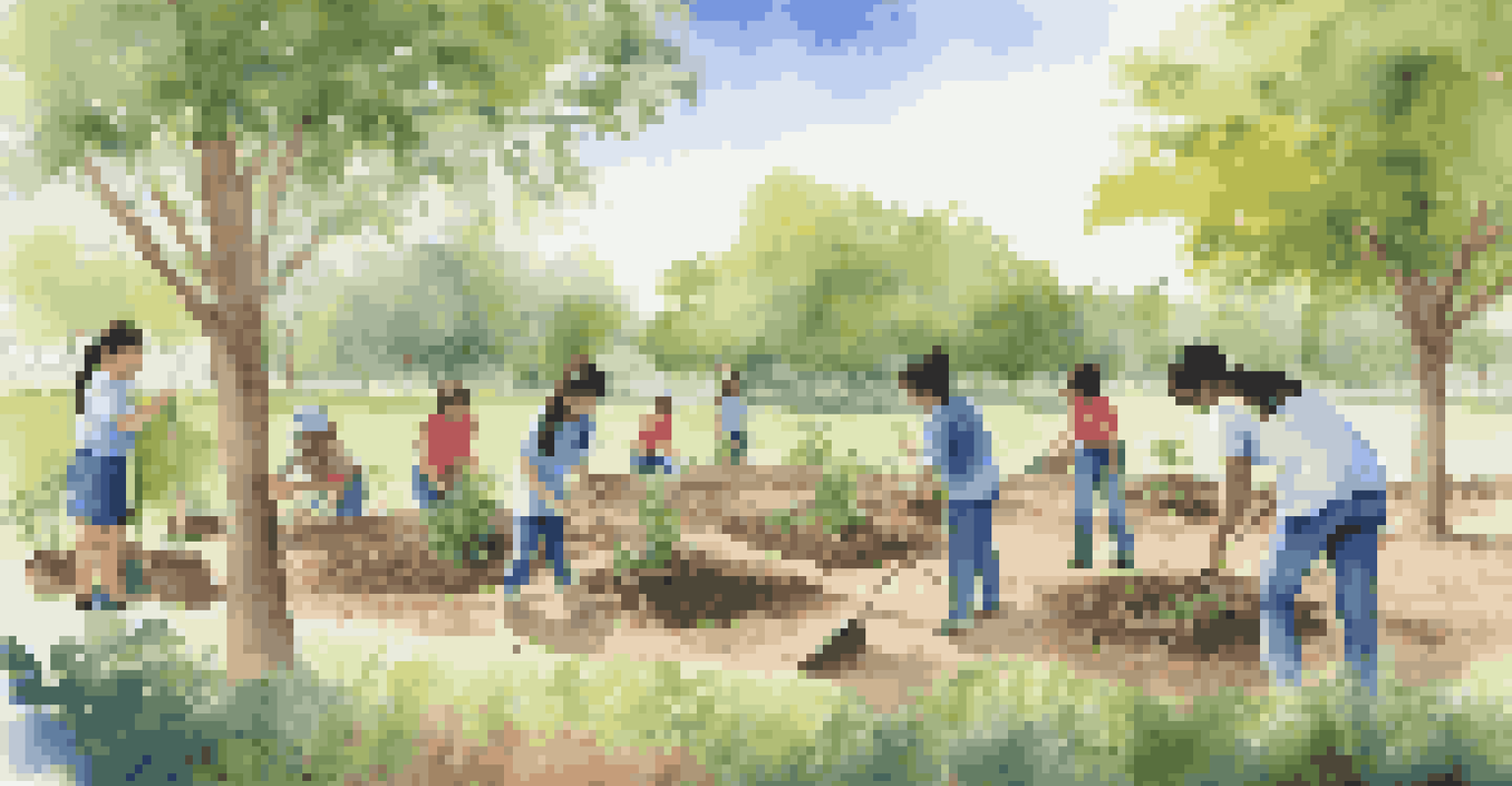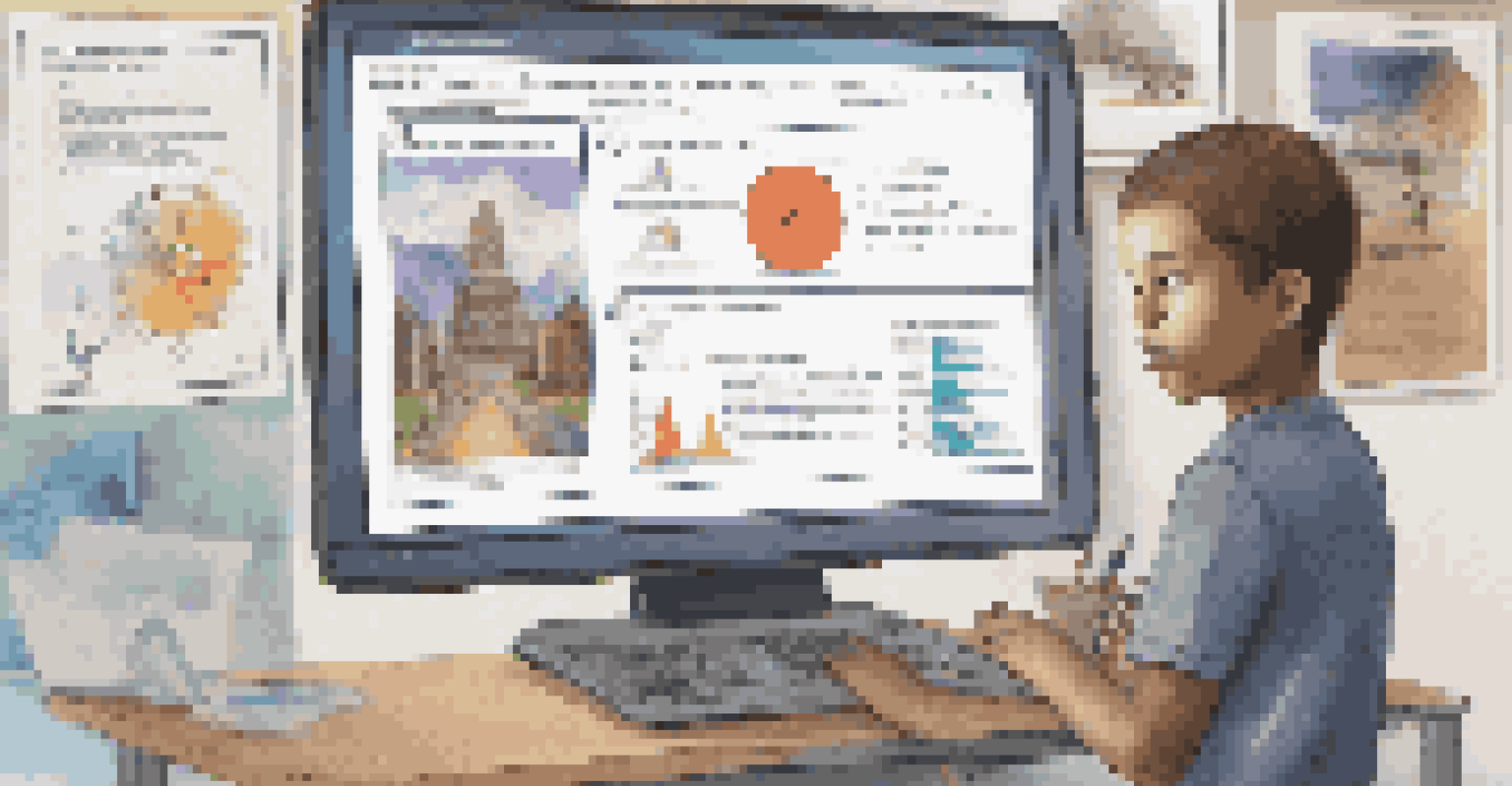Creating Authentic Learning Experiences with Blended Assessment

Understanding Authentic Learning in Education
Authentic learning is about connecting classroom knowledge to real-world experiences. It encourages students to engage in tasks that mimic the complexities they’ll face outside of school. By grounding learning in real-life contexts, students can see the relevance of their education, making the material more meaningful and memorable.
Tell me and I forget, teach me and I remember, involve me and I learn.
Consider a student studying environmental science who participates in a local conservation project. This experience not only solidifies their understanding of ecological concepts but also fosters a sense of responsibility towards their community. When students are involved in authentic tasks, they are more likely to take ownership of their learning.
Incorporating authentic learning into the curriculum can be transformative. It shifts the focus from rote memorization to critical thinking and problem-solving, skills that are crucial in today’s job market.
The Role of Blended Assessment in Learning
Blended assessment combines traditional evaluation methods with innovative, interactive assessments. This approach allows educators to gauge student understanding through various formats, such as projects, presentations, and self-assessments. By diversifying assessment methods, teachers can cater to different learning styles and preferences.

Imagine a course where students are assessed through a mix of quizzes, peer reviews, and reflective essays. This variety not only keeps students engaged but also provides a more comprehensive picture of their learning journey. Blended assessment encourages students to demonstrate their knowledge in ways that feel authentic to them.
Moreover, blended assessment can enhance feedback loops. With ongoing assessments, educators can provide timely and constructive feedback, helping students adjust their learning strategies as needed.
Integrating Blended Assessment with Authentic Learning
To create truly authentic learning experiences, integrating blended assessment is key. This approach allows educators to evaluate students in environments that closely resemble real-world scenarios. For example, a business course might include a project where students develop a marketing plan for a local business, assessed through presentations and peer evaluations.
The greatest gift is not being afraid to question.
By aligning assessment with authentic tasks, students feel their work is valued and relevant. This connection can motivate them to invest more effort and creativity into their assignments, knowing they are tackling real-world issues.
Additionally, this integration fosters collaboration among students, as they often work together on projects. This teamwork mirrors workplace dynamics, preparing students for future professional interactions.
Creating Engaging Assessment Tasks
Engaging assessment tasks are critical in maintaining student interest and motivation. Think about incorporating creative elements, such as multimedia presentations or interactive simulations, that allow students to express their understanding in diverse ways. When assessments feel less like tests and more like opportunities for creative expression, students are more likely to engage.
For instance, instead of a standard essay, students might create a podcast discussing their findings on a historical event. This not only keeps the learning process dynamic but also equips students with valuable skills in communication and technology.
Moreover, providing choices in assessment tasks can empower students. When they have a say in how they demonstrate their learning, it can lead to deeper engagement and personal investment in the material.
Feedback: The Heart of Blended Assessment
Feedback is essential in any learning process, and it becomes even more vital in blended assessment. Timely and constructive feedback helps students understand their strengths and areas for improvement. Think of feedback as a guiding light; it illuminates the path forward and helps learners navigate challenges.
In a blended assessment environment, feedback can be delivered in various ways, from one-on-one meetings to written comments or even video feedback. This variety can make feedback feel more personal and relevant, encouraging students to reflect on their work.
Furthermore, fostering a culture of feedback among peers can enhance the learning experience. When students review each other’s work, they not only learn from their peers but also develop critical evaluation skills.
Challenges of Implementing Blended Assessment
While blended assessment offers numerous benefits, it also presents challenges that educators must navigate. One significant challenge is the need for time and resources to design and implement diverse assessment tasks. Educators may find themselves stretched thin, balancing traditional grading with innovative assessment methods.
Additionally, there can be resistance from students who are accustomed to traditional testing formats. It’s important to communicate the value of blended assessment and how it enhances their learning experience. Educators can ease this transition by gradually integrating new assessment methods and providing clear guidelines.
Finally, ensuring consistency and fairness in grading across various assessment types can be tricky. Developing clear rubrics and criteria can help maintain objectivity and clarity, making the process smoother for both teachers and students.
The Future of Learning: Embracing Blended Assessment
The educational landscape is evolving, and blended assessment is becoming an integral part of this change. As technology advances, the possibilities for innovative assessment methods continue to expand. Virtual reality simulations, online collaboration tools, and digital portfolios are just a few examples of how technology can enhance authentic learning experiences.
By embracing blended assessment, educators can prepare students for a world that values adaptability and critical thinking. This approach not only enriches the learning experience but also equips students with the skills needed for future success.

As we move forward, it’s crucial for educators to remain flexible and open to new ideas. The combination of authentic learning and blended assessment can pave the way for a more engaging, relevant, and impactful educational experience.